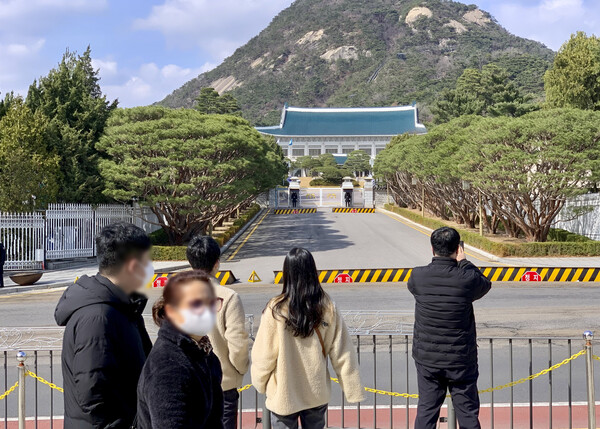This article was originally posted on Jayu Press and translated by OKN Correspondent.
If the presidential office moves to the Defense Ministry compound in Yongsan, Seoul, the no-fly zone in Gangbuk, Seoul, is expected to be reduced by more than half its current zone.
In addition, the presidential transition team explained that there will be no additional military facilities to be built in the Yongsan and Namsan areas due to concerns that the relocation of the presidential office to Yongsan will increase military facilities.
In an explanatory document distributed shortly after Yoon Seok-youl’s press conference on the 20th, his transition team said, “The existing flight routes south of the Han River can be used as they are, and the no-fly zone in the Gangbuk area will be reduced by more than half.”
The transition team stated, “The current P-73 no-fly zone (radius of 8.4 km) was established in the 1960s and has been in place for 60 years. As various equipment, weapons performance, and the capabilities of the ROK Air Force have improved, the P-73 airspace should now be revised according to the current situation.”
Although technologies such as missiles and drones (unmanned aircraft) have developed, it is now being viewed as acceptable to drastically reduce the no-fly zone in Seoul now that air threats have decreased significantly compared to the past as our military’s ability to seize airpower and radar detection has improved.
The transition team said, “As the no-fly zone in the Gangbuk area decreases, the use of public space will become more sufficient.”
Currently, Seoul’s P-73 no-fly zone is divided into zone A of 2 nautical miles (3.7 km) and zone B of 4.5 nautical miles (8.3 km), excluding Yongsan and the Han River. In these areas, if an aircraft flies without preclearance, in principle, it can be fired or shot down and fined up to 3 million won. This applies not only to manned aircraft but also to unmanned aircraft.
If the presidential office moves to the Defense Ministry compound, the prohibited airspace around the ministry will be reduced to a radius of 3.7 km.
In addition, the transition team said no additional military facilities will be built around the Yongsan area as well as the Mt. Namsan surroundings following the relocation of the presidential office to Yongsan.
The transition team explained that “Yongsan still has an anti-aircraft defense system to defend military facilities such as the Defense Ministry and the Joint Chiefs of Staff compound. By relocating to Yongsan, there is no need to install additional air defense batteries in nearby apartment buildings.” The transition team also added that no additional regulations will be imposed in nearby areas such as Yongsan as it has already been established as a military facility protection zone.
Regarding the restoration of the Yongsan base, the transition team explained, “Only 218,000 square meters or 10 percent of the 2.03 million square meters of the Yongsan base site have been restored. We are proceeding intending to complete a quarter of the restoration this year, including the plot in front of the presidential office.”
If the site in front of the presidential office is restored, fences will be installed around the office in the future, like the “Presidential Area” of the White House, so that the public can view the presidential office.
To read the original article in Korean, please click here.


